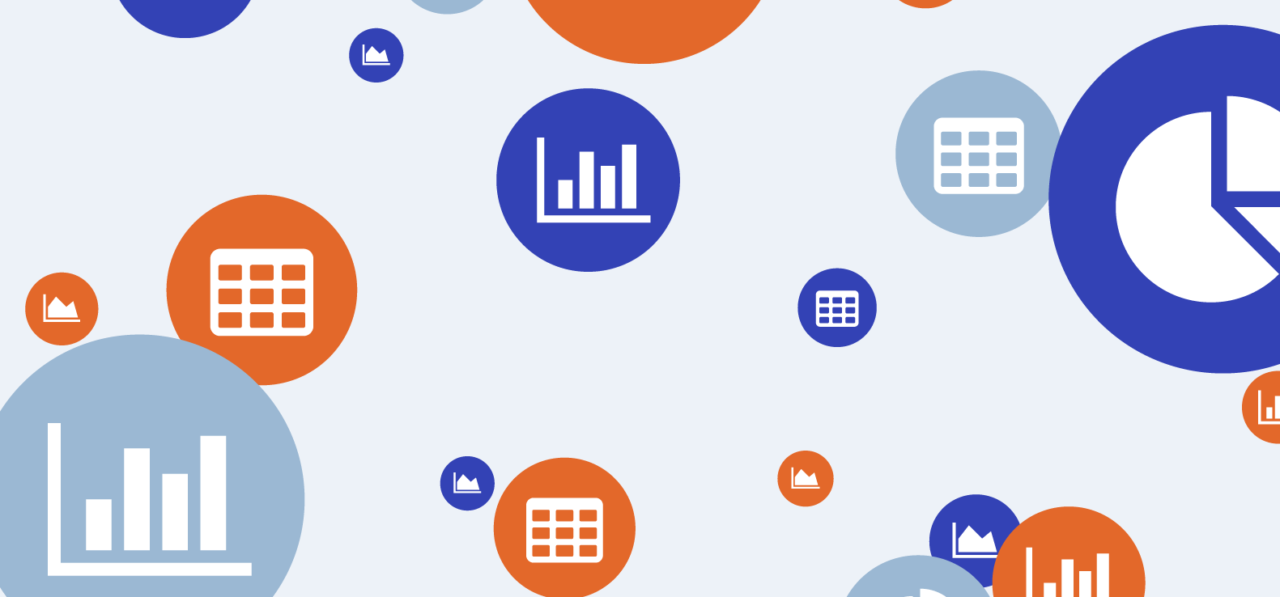What is Data Lineage?

By Michael Meyer
Published on 2024年8月14日

When you think of lineage, what typically comes to mind is one’s ancestry or pedigree. It’s a family tree that traces a path back past your parents, grandparents, and more, showing from whom you descended and how you’re related.
The same can be said for data, too. Data lineage shows the provenance of the data you’re looking at, detailing where it originated and how it may have transitioned. It reflects the data life cycle, the source, what processes or systems may have altered it, and how it arrived at its current location and state.
Data lineage helps you understand the data you’re using, what may have happened to change it over time, and who was involved in any processing. There are many reasons a data asset may change. It could have been transformed through filters or calculations, and new data may have been added, updated, or deleted along the way.
In this way, data lineage is a powerful tool for increased understanding and trust. Knowing the data lineage helps you find the source of errors, determine the data’s suitability for usage, understand how processes can be optimized or improved, speed up time to insights, and much more.
Why Is Data Lineage Important?
Data lineage helps you holistically understand the data you intend to use. Was it transformed? Has the quality been evaluated or improved? Was it used by a specific team or in a particular report? What is the origin of the metrics from a dashboard? The more you know about data lineage, the better decisions you can make about data usage.
Here are a few ways data lineage can improve data usage:
Enhancing Data Consistency
Data assets are bound to change over time. New data might be added, old data deleted, or alterations made. Data changes can affect how you use the data and its value to your business. Understanding changes to data ensures you get the most benefit from it.
Enabling Data-Driven Decision-Making
Data enables strategic business success. Every company and department needs to become more data-driven and build a data culture. However, people must understand the data to best use it, make better decisions, and keep the business viable. Data lineage helps provide a deeper understanding of the data people are using.
Streamlining Data Migrations
Successful data migrations demand deep understanding of the data. You wouldn’t want to migrate bad or misunderstood data to new systems. Similarly, you need to understand how data has been sourced, stored, and altered to know how to migrate it. Data dependencies help ensure that no data assets are missed. Data lineage provides these details, making data migrations more efficient and successful.
Strengthening Data Governance
Understanding data flow is critical to data governance. Data lineage adds to the value of audits and highlights areas of potential risk. Lineage can even reveal areas of noncompliance and conflicts with internal policies or external regulatory requirements.
Informing IT Optimization
Tracking data as it moves through your organization informs IT of redundancies, architectural gaps, and usage patterns so they can be more responsive to business needs. This interactive data lineage also helps IT understand the scope of data assets to optimize their pipelines and processes and better prepare for future requirements.
What Is the Value of Data Lineage in Business?
Reliable data is essential for effective decision-making and improving operations in all areas of your business, from human resources to sales. Take, for example, the ability to trace KPI metrics to understand the origin system. Business analysts can quickly ensure all origination systems are feeding the data warehouse for the metric.
How Data Lineage Works
Data lineage is a comprehensive tool for tracking and documenting the entire data journey within an organization. Here's a breakdown of how it works.
Data Source Identification
Data lineage starts by identifying an organization's different data sources, including databases, data warehouses, dashboards, and reports. Each source is documented to create a complete inventory of data assets.
Mapping Data Movement
After identifying data sources, data lineage maps out how data moves from source to destination. It traces the path as data is extracted, transformed, and loaded (ETL/ELT) into various systems or applications. This involves recognizing data transformations, conversions, and any cleansing processes.
Dependency Tracking
By tracking dependencies between data elements, data lineage identifies which datasets or reports rely on specific data assets. This information is crucial for understanding the potential impact of changes to underlying data.
Data Quality Monitoring
Data lineage often includes data quality metrics. These metrics help organizations assess data quality at various stages of its journey. Data quality checks can identify errors, inconsistencies, or anomalies in the data.
Timestamps and Versioning
Timestamps are recorded when metadata is added or modified. This historical view allows organizations to trace data changes over time. In addition, versioning is particularly important for auditing and compliance.
Visualization
Data lineage is often presented visually through diagrams or flowcharts. These visual representations help stakeholders understand how data moves and transforms within the organization. Visualization tools may use different symbols or colors to represent various data actions. The top tools provide technical and business users with the context they need for deeper understanding.
Metadata Integration
Technical metadata, which includes information about data structures, definitions, and usage, is integrated into data lineage. Business metadata helps provide context for data elements and assists in understanding their meaning and relevance.
Impact Analysis
"What reports will be affected if we update this data source?" Impact analysis answers questions like this. It assesses the potential downstream consequences of structural changes or issues related to data sources, transformations, or data elements.
Data Governance and Compliance
Data lineage plays a crucial role in data governance. It helps activate data governance policies and standards along with compliant data use. In addition, compliance audits can utilize the lineage to see the policies in place for the data assets.
Operational Efficiency
Data lineage helps improve operational efficiency by providing transparency into data processes. Organizations can identify performance bottlenecks, redundancies, and opportunities for process improvement.
What is Data Lineage in Data Integration?
Data integration involves ETL (extract, transform, load) or ELT (extract, load, transform) processes to transform raw data into a consumable format. Data lineage provides a visualization of how data moves through integration stages. This involves tracing where the data comes from, identifying the transformations applied to it, and monitoring its final destination within a data warehouse or database.
Data lineage creates a detailed map of how data moves from source to target database in a system. It shows the extraction from source systems, the transformations for business needs, and the loading into a database for analysis. It helps organizations maintain data quality, understand the impact of changes, ensure regulatory compliance, and resolve data pipeline problems.
By visualizing data lineage, ETL developers, data engineers, and analysts gain insights into data dependencies, potential bottlenecks, and areas where data engineers can enhance data accuracy and efficiency. Additionally, data lineage is crucial in data governance, ensuring transparency and accountability throughout the ETL process.
Data Lineage vs Data Provenance vs Data Governance
Data lineage, data provenance, and data governance are closely related terms. They are all essential for an organization to maintain data quality and security over time. Together, they form a comprehensive framework for effective data management.
Data Governance: Building the Foundation
At the heart of this framework is data governance, which establishes a structured way to manage data assets within an organization. It defines critical components governing the entire data lifecycle, including business owners, business terms, rules, policies, and processes.
Although data governance covers more than data lineage and provenance, these aspects are crucial for maintaining organizational standards in data management. Together, they form a robust system that ensures data assets are of high quality, secure, and aligned with the organization's goals.
Data Lineage: Visualizing Data Flow
Data lineage solutions are essential to ensure data complies with set standards within data governance. These solutions provide visibility into how data flows and transforms within the data pipeline. Imagine data lineage as the map that shows the path of your data, from where it starts to where it ends. This level of detail is beneficial for debugging data errors, which allows data engineers to troubleshoot effectively and find solutions quickly.
Data Provenance: Tracing Data Origins
Data provenance, closely linked with data lineage, focuses specifically on the origins or source of data. This is important as data can be collected from many sources and integrated before presenting it to the consumer. Think of it as a birth certificate for your data, documenting where it originated.
Five Data Lineage Best Practices
Consider these best practices to ensure that your data lineage process remains effective and provides valuable insights into your datasets.
1. Engage Business Executives and Users Early
Effective data lineage initiatives, like data governance programs, need senior executives' approval and funding. Business managers and users should also be involved to ensure that data management teams understand how data is used in business processes and to verify the relevance and accuracy of data lineage information.
2. Document Business and Technical Data Lineage
Various stakeholders use data lineage for different purposes. Business lineage, which focuses on the origin and flow of data from a high-level perspective, provides valuable context. Technical lineage, which caters to IT professionals, involves data transformations, integrations, and pipelines, catering to IT professionals. Collecting both types of lineage information ensures that it meets the needs of business users, analytics teams, and IT experts.
3. Align Data Lineage with Real Business and IT Requirements
Data lineage should not be an academic exercise. It should facilitate informed business decisions, enhance data governance, improve data quality, and contribute to broader data management objectives to maximize its benefits. Ensure that it addresses genuine business and IT needs to avoid being an underutilized investment.
4. Adopt an Enterprise-Wide Approach
Make sure that data lineage serves practical purposes. It should aid in making informed business decisions, strengthen data governance, enhance data quality, and contribute to broader data management goals. Avoid lineage becoming an underutilized investment by ensuring it meets real business and IT needs.
5. Utilize a Data Intelligence System with Embedded Lineage Information
Finding and understanding essential data can be a big challenge for business intelligence and analytics users. Simplify their experience by making adata intelligence platform that lists available data resources and includes lineage information. This gives users insights into the data’s origins and how it changes, making data discovery more efficient.
By following these data lineage best practices, you can enhance the value and effectiveness of your data management efforts.
Data Lineage Use Cases
The demand for real-time insights has never been greater. Teams can leverage end-to-end data lineage tools to enhance their workflows in several impactful ways:
1. Data Modernization Planning
During data modernization projects, where data is moved to the cloud or new software solutions are introduced, understanding data locations and lifecycles becomes paramount. Data lineage offers a detailed view of how data has evolved within the organization, helping teams plan carefully for system migrations or upgrades. This efficient approach speeds up the transition to the cloud and provides ways to optimize the data system by archiving or purging outdated data.
3. Compliance Assurance
Data lineage ensures compliance by aiding in audits, improving risk management, and activating data governance policies and regulations. For example, GDPR legislation in Europe and state-level data protection policies in the United States require robust data protection measures.
Data lineage tools empower organizations to efficiently address compliance challenges, as failing to comply can be resource-intensive and costly.
4. Impact Analysis
Data lineage tools offer insights into the potential impact of business changes, especially for downstream reporting. For instance, if a data element's name changes, data lineage helps leaders understand the effects on dashboards and users relying on that reporting.
Additionally, data lineage assesses the impact of data errors across the organization, tracing them to their origins. This facilitates improvements in data processing and effective communication with relevant teams to address issues.
To summarize, data lineage is a critical element of modern data management. It provides transparency, governance, and optimization for various business processes. It enables organizations to use data as a strategic asset, paving the way for data-driven decision-making and fostering a culture of innovation.
The Future of Data Lineage
The future will include more data. Every day, more technology and devices generate more data points. Businesses rely more on cloud-based services and technologies to generate, process, store, access, and analyze data. Winning organizations will quickly find ways to understand the data and then put it to good use; this will require more insights into data lineage for both technical and business users.
As businesses migrate to the cloud, new capabilities emerge. Today, businesses are learning to scale data governance and management efforts using the cloud. Tomorrow, they’ll seize opportunities drawn from machine learning, automation, and AI. Many already are, as these technologies can automatically process and alter data. But, they can also log every transformation—in the form of data lineage—making the data, and the data lineage, more crucial and valuable.
Organizations need to understand data lineage before people can use data effectively. This means each user needs a unique view of data visualization, depending on their role. Technical users will expect column-level lineage with detailed transformation information and data health. Business users require a more high-level depiction of core data assets, relationships, business metadata, and policy information to use the data effectively.
What to Look For in Data Lineage Tools
Choosing the right data lineage tool requires strategically assessing factors aligning data management with business objectives. Consider diversity in data sources, formats, and the complexity of data flows. Equally important are your data governance framework, policies, and roles, forming the structure for data lineage practices. To make an informed decision, evaluate data lineage tools based on these essential criteria.
1. Data Source Versatility
Prioritize tools that effortlessly access various data sources and employ AI-driven metadata extraction.
2. Centralized Metadata Repository
Look for solutions that aggregate metadata into a centralized hub for effective management.
3. Visualized Representations
Choose tools that offer clear visualizations of data lineage to enhance comprehension for both technical and business users.
4. Developer-Friendly APIs
Prioritize tools with APIs to enable custom application development for lineage.
5. Efficient Search Capability
Ensure that the tool provides robust search functionality for rapid data flow tracing, both forward and backward.
6. Provide Manual Lineage
There are times when you need to stitch lineage manually. A prime example is when replication moves data from a legacy database to the cloud.
Alation’s Data Lineage
Impactful data lineage requires detailed end-to-end data flows across the organization's data assets. Alation provides advanced data lineage for comprehensive visibility and understanding of the data life cycle across your enterprise. Capabilities include:
Automatic table and column-level lineage
Column ordering, search, and expansion
Business lineage with business titles and metadata overlays, such as trust flags and data health
Overlay metadata summary display
End-to-end mini-map preview
Data source groups
Data flow and temporary object filtering
APIs for manual augmentation
Manual lineage
Viewer role personalization (ex., Default data flow filters applied)
To learn more about Alation for data lineage, sign up today to get a demo.
- Why Is Data Lineage Important?
- What Is the Value of Data Lineage in Business?
- How Data Lineage Works
- What is Data Lineage in Data Integration?
- Data Lineage vs Data Provenance vs Data Governance
- Five Data Lineage Best Practices
- Data Lineage Use Cases
- The Future of Data Lineage
- What to Look For in Data Lineage Tools
- Alation’s Data Lineage







